9ft x 3.5ft Custom Black Epoxy Dining Table
Custom Black Epoxy River Dining Table in walnut – This beauty measuring 9ft x 3.5ft was custom made for this client, made of custom selected black walnut slabs standing on and a pair of diamond legs. Looking for something similar to this table? It’s easy, use the Quote button on this page to start the process, it’s free. Typically a custom build can take anywhere from 4-6 weeks after we complete the wood selection phase.
Custom made to order items via Woodify. Use the quote button to start the conversation about you upcoming build. Choose from a wide selection of local Canadian wood species, submit examples of epoxy styles you like and we’ll give you our feedback and a quote for that style.

Features for customers include exclusive pricing via our network of vendors, full project management services, free quotes, and money back guarantees.
Woodify Canada serves as an aggregator to companies that craft premium quality wood products. We strive to offer a diverse selection of products with exclusive deals to our visitors. Visitors take advantage of getting FREE Quotes..
other features include…
- Absolutely unique one-of-a-kind table made from kiln dried to below 9% moisture content reclaimed Canadian wood (Walnut, Maple, Oak or Ash)
- Artistically created river with original “floating streams” design on the riverbed and crystal clear river top made from Canadian zero-VOC epoxy resin
- 100% food-safe scratch resistant sealer and clear finish
- Maintenance kit to repair any scratches and remove stains on the tabletop in just 5 minutes
Here are just some of the most common hardwood trees found in North America.
Ash
The mature ash tree (Fraxinus) often has pinnately compound leaves and grey-brown ridged bark. Green and white ash are the most common species of ash tree; these can be found in eastern regions of the U.S. and parts of Canada.
Beech
Beech trees (Fagus) can be identified by their dark green oblong leaves and thin grey bark. The brown fruit produced between September and October attracts small mammals and a range of birds.1
Basswood
The basswood (Tilia) can grow to be 80 feet tall and produce yellow flowers in the summer, giving it the additional names of the honey or bee tree. Basswoods have large, oval or pyramid-shaped crowns.
Birch
Birch trees (Betula) are some of the more easily identifiable trees because of their thin, layered bark with lenticels, or raised porous lines.
Black Cherry
The black cherry tree (Prunus) has smooth bark when young; it develops a fissured surface as the tree matures. In addition to its fruit, the black cherry produces pink and white flowers in the springtime.
Black Walnut
A deciduous tree capable of reaching up to 130 feet tall, the black walnut (Juglans nigra) can be found in the central-eastern United States. It has serrated compound leaves and furrowed, dark-colored bark during dormancy.
Cottonwood
Cottonwoods are popular (Populus) trees. You can identify cottonwoods by spotting the cotton it produces. Other ways are looking for cottonwoods’ triangular trees and yellow-green bark that turns gray-brown with age. These trees also produce clusters of catkin flowers.
Elm
The most common types of elm (Ulmus) are the American, rock, and slippery elm trees. While elms are originally from Asia, they span most of the Northern Hemisphere today.
Hackberry
A fast grower that can reach up to 130 feet tall, the common hackberry (Celtis occidentalis) has oval-shaped leaves and grey bark that is mostly smooth. Hackberries produce small drupes that are popular among wildlife.
Hickory
The family of hickory (Carya) trees can be separated into the major shagbark, pignut, and pecan trees. Shagbarks are easily identified by their shaggy, peeling grey bark. Pignut trees have bitter, pear-shaped nuts while pecans produce sweet nuts that are cylindrical.
Holly
Holly (Ilex) trees are broadleaf evergreens with dull green leaves and sharp, long spines. Its berry-like drupes are consumed by local birds and wildlife, and its green-white flowers attract honeybees.
Locust
The black locust (Robinia pseudoacacia) tree has distinctive compound leaves with up to 19 leaflets. This tree is native to the south-eastern United States and commonly found in other regions of North America, as well as Europe and Asia.
Magnolia
Southern magnolia (Magnolia grandiflora) is easily identified by its large, showy white flowers. This tree is found in regions of the central and southeastern United States.
Maple
Maple (Acer) trees contain a tremendous number of species—about 125, although five are much more common in North America than the rest. The majority of maples are known for their simple leaves with three to five veins that branch off from the main stalk. Maples are most easily identified in the fall, when the leaf colors are the brightest: deep red, golden yellow, and a blend of oranges, depending on the species.
Oak
The oak (Quercus) genus also contains many species (approximately 400). These large trees live a long time, sometimes hundreds of years, and often have grey-to-black bark that is scaly or furrowed. They are popular among wildlife for their acorn production.
Sassafras
Sassafras is native to eastern North America. Its bark is dark brown to red and aromatic. The tree produces fragrant gold, yellow, or green flowers in the spring and blue drupes attached to red cups and stems.
Sweetgum
Sweetgum (Liquidambar) trees are also called star-leaved gum for their characteristic leaves and the useful sap it produces. These are great shade trees found throughout Asia and the Americas.
Sycamore
You can recognize a sycamore (Platanus) tree by its bark full of smooth, irregular shapes resembling camouflage. These trees are mostly found east of the Great Plains.
Be the first to review “9ft x 3.5ft Custom Black Epoxy Dining Table” Cancel reply
You must be logged in to post a review.
General Enquiries
There are no enquiries yet.
Related products
Browse Furniture
Browse Furniture



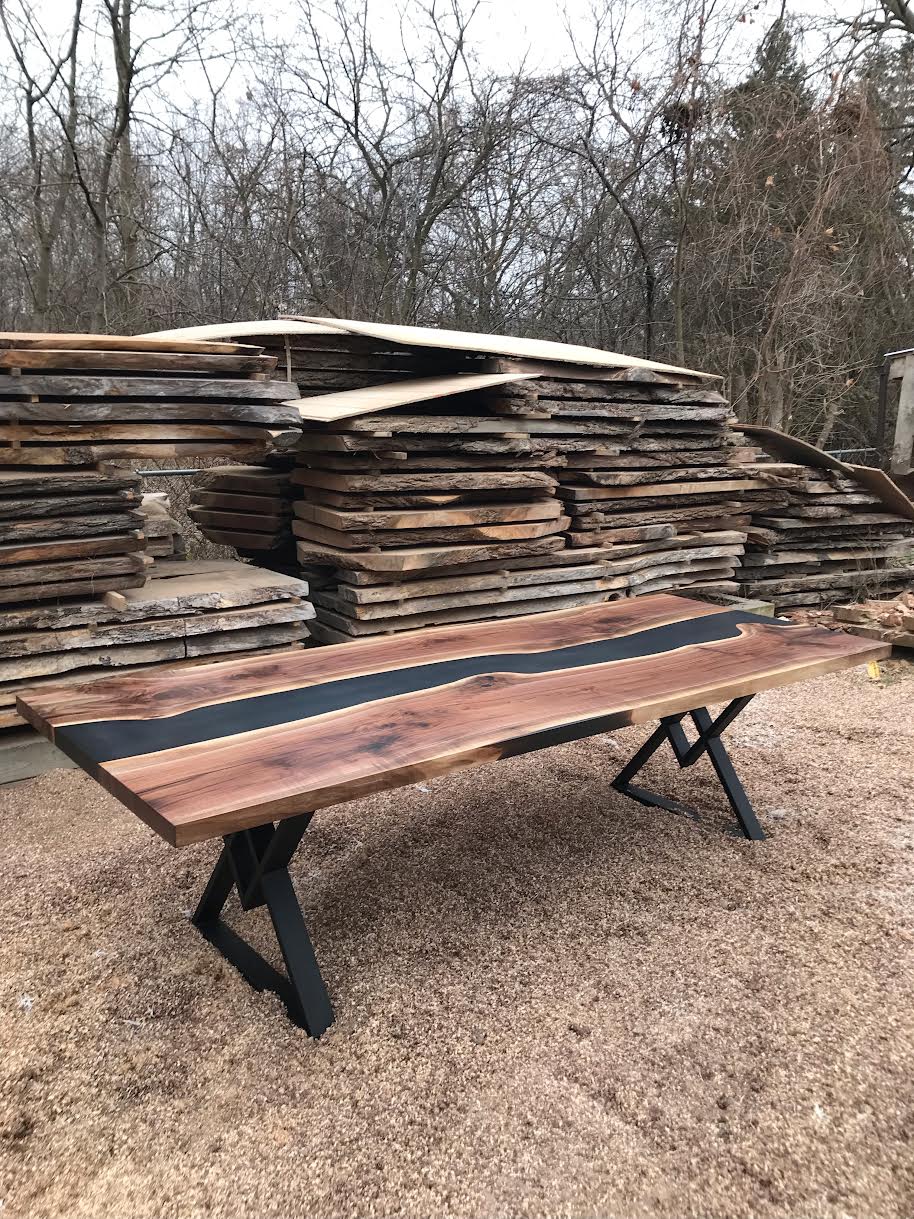
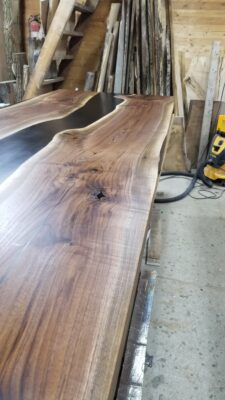

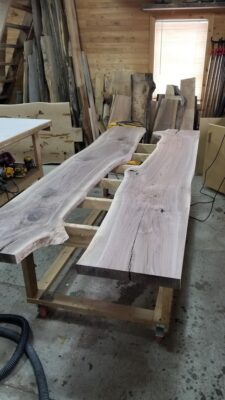

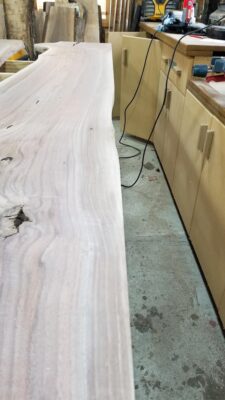
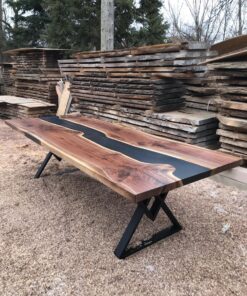
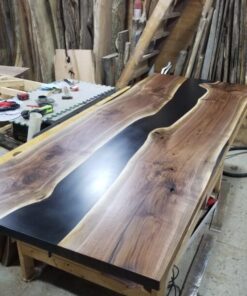












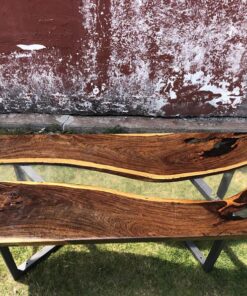
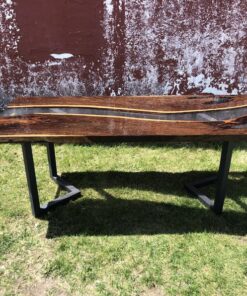
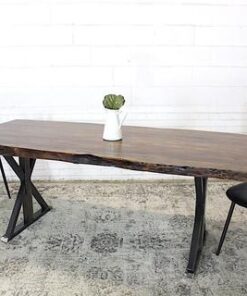

Reviews
There are no reviews yet.